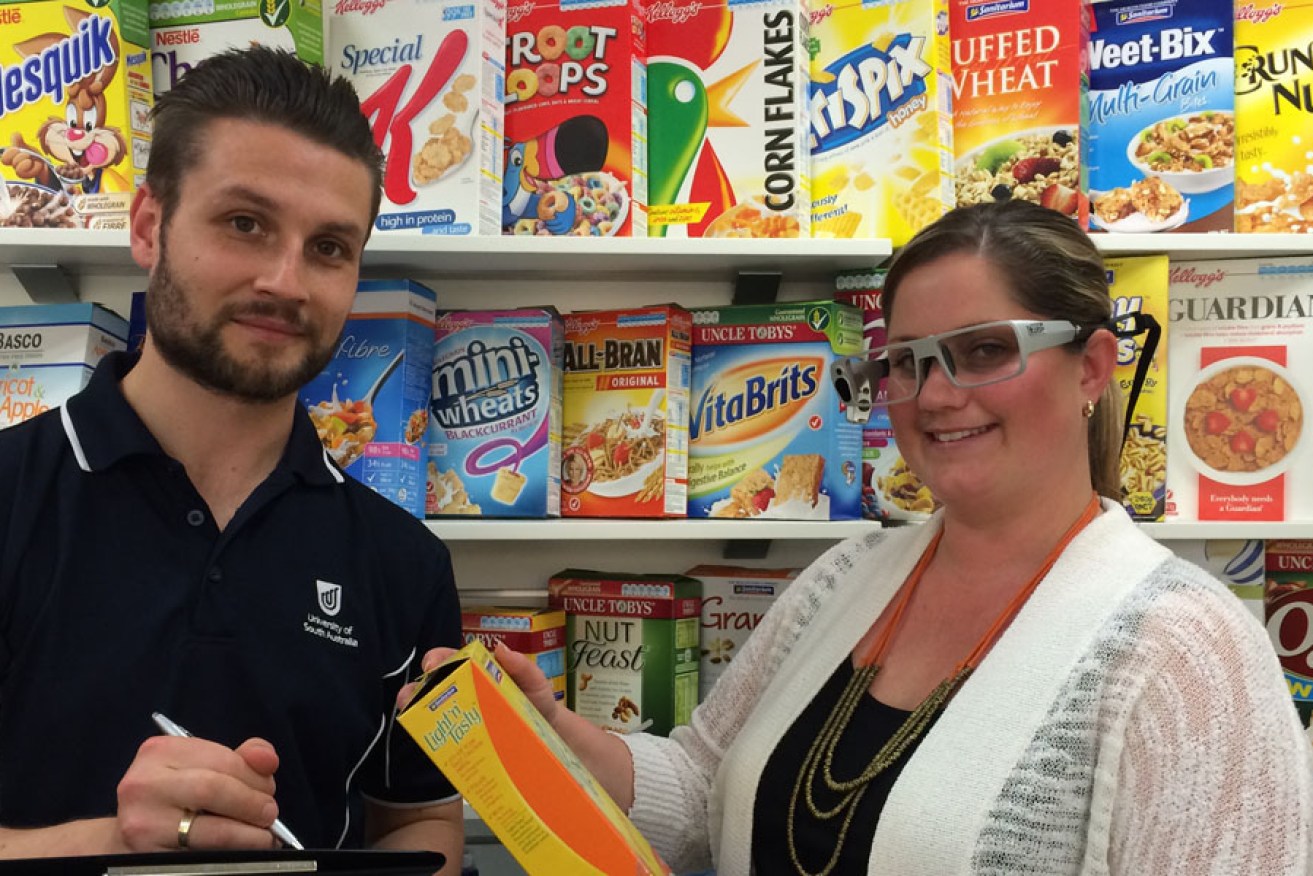Eye-tracking technology offers shopping insights


UniSA researcher Zac Anesbury interviewing Barossa Co-op shopper Annette Reinli-McMahon, who is wearing the eye-tracking glasses.
A rural co-operative is using state-of-the-art technology to help it keep jobs in the community and compete against supermarket giants such as Coles and Woolworths.
The Barossa Co-op, which has more than 17,000 members, has adopted eye-tracking technology to collect information about its customers’ buying habits in order to better serve them.
The initiative came about as a result of an approach by a University of South Australia research expert who had recently moved to the region.
“I came across the Co-op as a shopper, having recently bought land in the Barossa,” said Dr Svetlana Bogomolova of UniSA’s Ehrenberg-Bass Institute for Marketing Science.
The institute’s marketing expertise and practice has helped companies such as Coca-Cola, Unilever, Schweppes, Mars and P&G to continue their global success.
The Barossa Co-op is a group of Nuriootpa businesses, including Foodland, Mitre 10, Betta Electrical, Sports Power and Toyworld, which rewards its customers with a profit share calculated on a percentage of spending across all stores.
“I was impressed with the Co-op’s friendly approach and desire to better serve their community,” Bogomolova says. “I met with the CEO Graham Longmuir and we found many ways in which our two organisations could collaborate.”
The Ehrenberg-Bass Institute is now using its expertise to help the Barossa Co-op collect information which may be useful in the design of a new $10 million shopping centre.
Bogomolova says the Barossa Co-op project is one of the first times its expertise and technology has been used in the public domain.
“We are currently working with Foodland customers using Tobii eye-tracking glasses to track and record information about how they interact with the store.
“The eye-tracking equipment is the only objective way to record this kind of information.”
The idea is for participants – recruited outside the supermarket – to wear the glasses while they do their normal shopping. Bologomova says most shoppers know about the project because there have been newspapers stories and flyers, and they have seen people they know wearing the glasses.
“Our study and the glasses have become big news in the community; people talk about it an encourage each other to participate.
“After the participants have finished their shopping, we then play back the video and ask them to talk us through their shopping trip. This helps us to validate the information and gain more insight into their choices and behaviours.
“They might say they are finding the cheapest product, they’re looking for their favourite product or that they are thinking about something else and making habitual choices.
“We witness all sorts of things on camera – people forget they are wearing the glasses.”
Bogomolova says the traditional questionnaire method of market research relies on people noticing and remembering their behaviour.
“People make a lot of decisions on a subconscious level and when you press them for information on their routine and subconscious behaviour, they make up stories to give more thoughtful or intelligent answers.”
Bologova says the Barossa Co-op project has been well received within the community, with many shoppers volunteering their time to participate.
“I am very excited about the benefits it can bring to the Barossa Community and the South Australian economy, as well as the science and knowledge about how shoppers make food choices in a supermarket, as this has direct influence on the health of family budgets and waistlines – about 60 per cent of what we eat comes from supermarkets. So, uncovering how people make supermarket choices can inform the academic community, the industry and the policy about ways to help consumers spend less money on groceries and choose healthier products.
“We hope to finish by mid-November and to have all the results by March. The finding will be used to publish academic papers, and to influence the industry practice, such as to advise the Co-op on how to design a new store making decisions that are scientifically evidence-based according to their own shoppers. We bring the voice of the consumer to the Co-op.
“The Co-op is the biggest employer in the region – it’s a win-win situation.”




